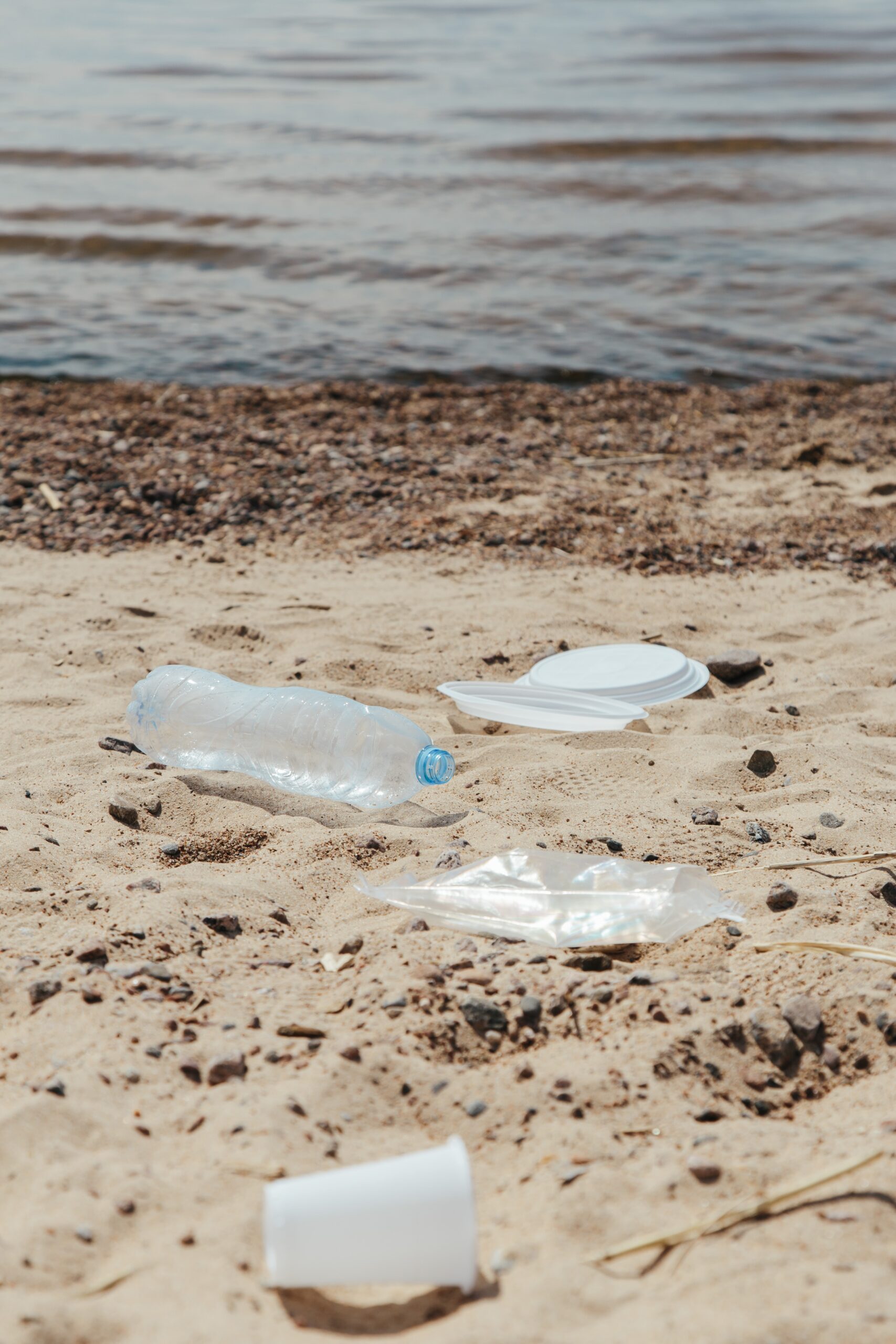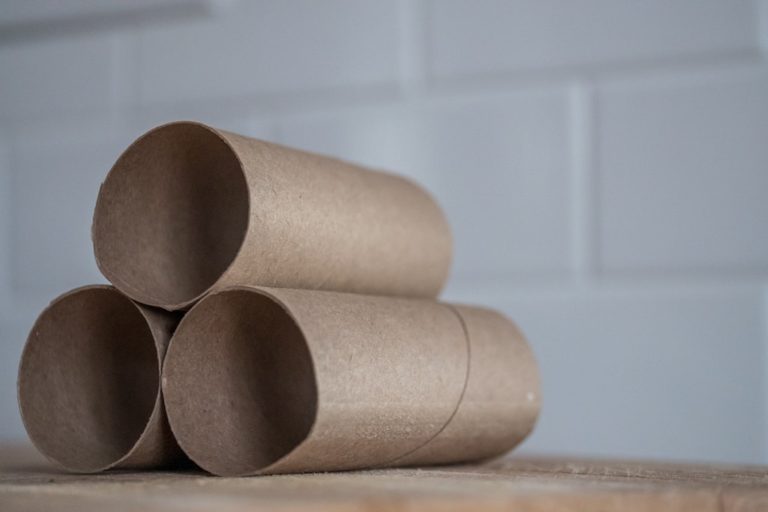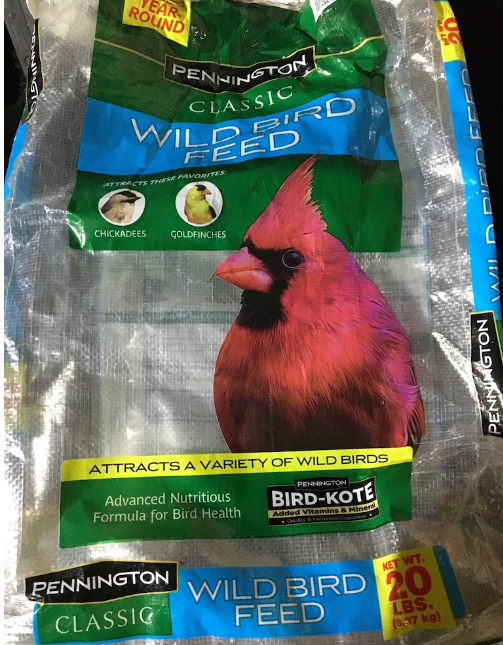Easy ways to reduce plastic use and plastic waste
(This post may contain affiliate links. See the full affiliate disclosure here for more info.)
Can we really reduce plastic use, given that it’s so ingrained in our lives?
So many consumer goods are made of plastics that are part of modern life. And it’s a huge problem on the global level.
We certainly need to try.
Take a quick look around you. What do you see that’s made of plastic?
I see the cover to my laptop, the TV remote and TV housing, a bottle of hand lotion, the cords to my lamp and computer charger, and the huge cup I drink water from all day.
Oh, and my checkbook cover. I’m sure those are the tip of the iceberg.
I’ll explore the history of plastic, our dependence on it, the lifecycle of plastic, how to reduce the use of plastic, how to reduce plastic waste, and what is being done to address the problems associated with plastic waste.
Scary recent scientific findings
Microplastics, the by-product of discarded plastic, are found in our soil, oceans, and even breast milk.
Microplastic beads (very small beads made of plastic) were also intentionally made for use in health and beauty products. Plastic microbeads are now banned from cosmetics and personal care products in the United States (US).
And even scarier? The breast milk study could not find an association with a specific exposure of the mothers to microplastics. They looked at mothers’ ages, the use of personal care products containing plastic compounds, and the consumption of fish and shellfish, beverages, and food in plastic packaging.
What does that imply? That exposure is EVERYWHERE.
A study published February 22, 2023, measured the levels of six types of chemicals (PFASs) used in plastics in the blood of 449 overweight and obese adolescents and young adults.
The presence of PFASs—the study could only say that the participants were exposed because it wasn’t clear how these substances got into the blood—was associated with alterations in protein and fat metabolism.
The history of plastic
If you are as old as I am, you may remember Bakelite. It was the first plastic, invented in 1907 by a Belgian chemist named Leo Baekeland, who combined formaldehyde and phenol.
Bakelite was used for jewelry and other household items. I remember radio housing made of Bakelite, as were the first phones (but I’m not that old!). It’s a hard, colorful plastic that changed everything.

Fast-forward a couple of decades, and as so often happens in science, an experimental failure produced a useful product, a polymer of ethylene—polyethylene—that is widely used now because it’s strong, flexible, and heat-resistant.
Polyethylene rapidly became the world’s most abundant plastic. Enter plastic shopping bags, artificial joints, and plastic storage containers.
No one ever thought that we’d face trying to find ways to reduce plastic use.
Do we need plastic?
Do we need plastic? Can we live without plastic?
I found an interesting explanation of the different types of plastics and what each is used for on the UN Environment Programme site.
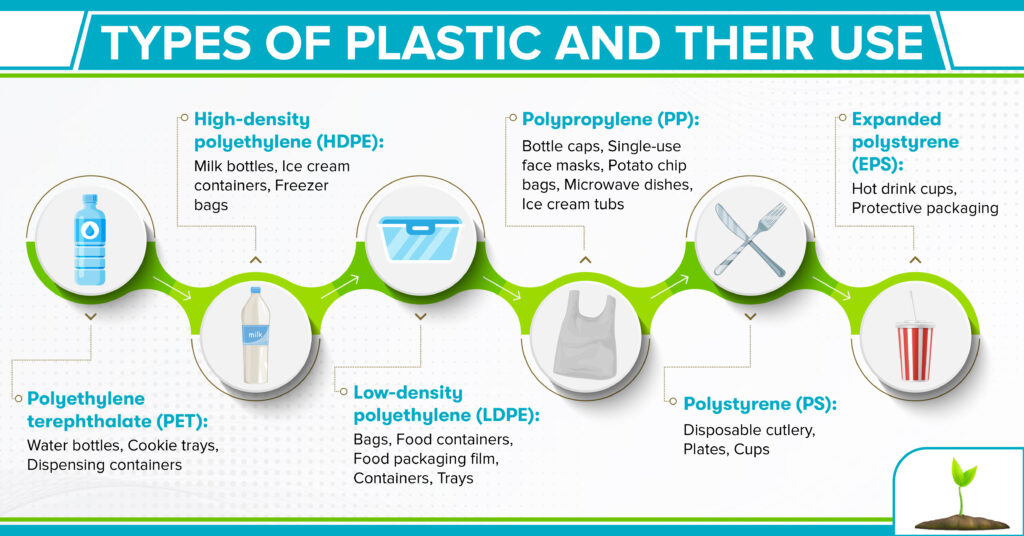
I’m surprised that medical supplies are not listed. I know that plastic is used for everything from IV tubing and bags, sterile covers for surgical equipment, sterilization bags and pouches, disposable gloves, and syringes to Petri dishes in the lab.

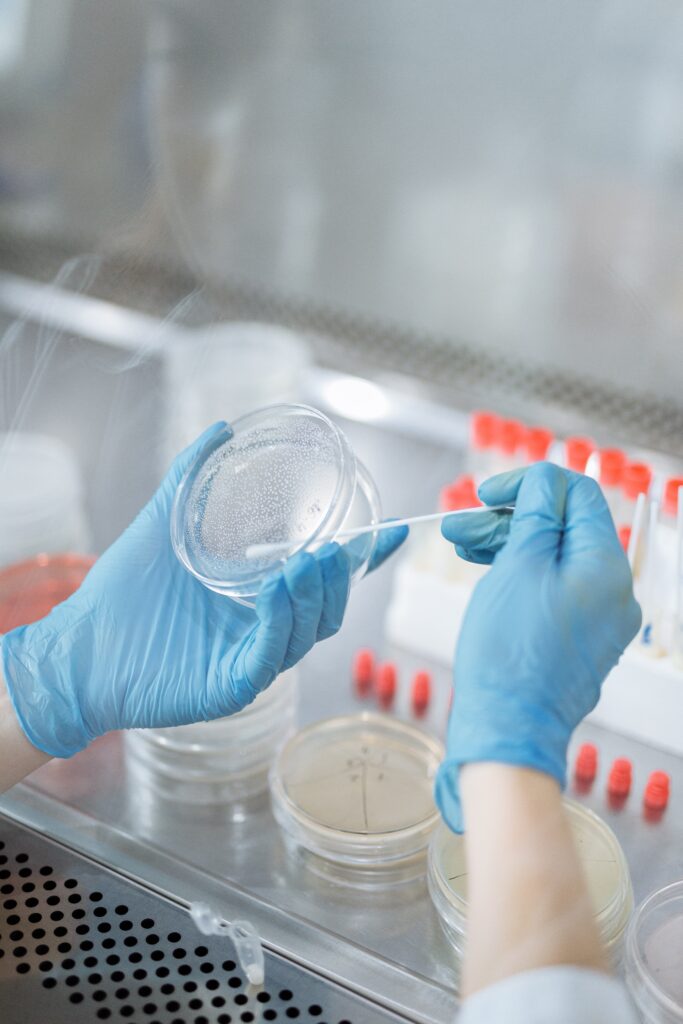
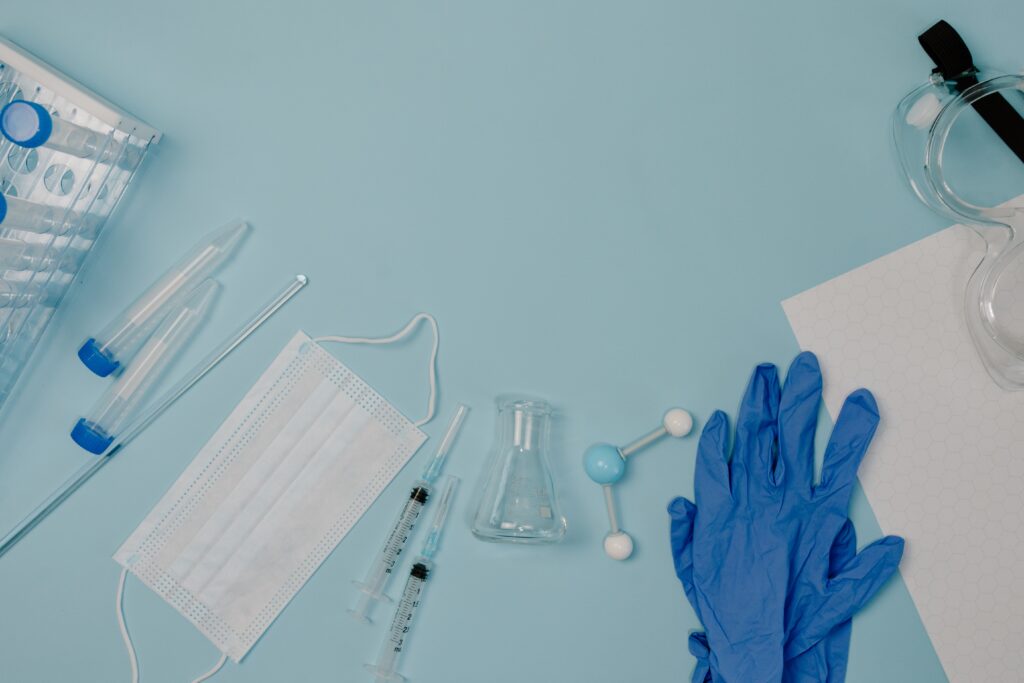
Single-use plastic has been a game-changer in medicine. Single-use devices have allowed for one supply to be used for one patient only once. Not having to try to thoroughly disinfect and sterilize medical equipment has cut patient infections significantly.
Much of the plastic used in healthcare is PVC, polyvinyl chloride. The same material as you likely have in your home sink drains.
However, DEHP, which is a type of phthalate, is added to PVC to make it more flexible. Phthalates are banned in food but not in IV tubing.
Phthalate exposure was associated with social, cognitive, and attention problems in children aged 6-11 years.
Another study found an inverse relationship between phthalate exposure and thyroid function in preschool children. That is, higher phthalate levels were associated with lower thyroid function.
A recent study published in 2018 reported that DEHP was found in newborns with heart defects who underwent surgery, consistent with exposure to medical devices containing the type of plastic.
Plastic supplies are cheap to manufacture, not breakable, and lighter to transport and store.
However, in an effort to be conscious of the impact of single-use plastics, hospitals can now have their devices “reprocessed,” essentially making them into another sterile, single-use device.
This process is tightly regulated by the Food and Drug Administration (FDA) because patients’ lives depend on it.
Reprocessing is estimated to cut the effect of medical devices on global warming in half by avoiding the use of virgin materials.
What’s the connection between plastic and global warming? Keep reading…
The lifecycle of plastic
To truly understand the magnitude of the problem with plastic, we need to examine its lifecycle.
How is plastic manufactured?
The plastic lifecycle starts with the extraction of raw materials used to make plastic. These include cellulose, coal, natural gas, salt, and crude oil. Everyone knows the impact on the environment of extracting coal, natural gas, and crude oil.
Next. is plastic production, when these raw materials are refined to ethane and propane. Then, they are heated to produce ethylene and propylene. They are combined with a catalyst—something that starts a reaction—to produce a fluffy polymer that looks like powdered detergent.
The polymer is melted and extruded into a long tube as it cools. The tube is cut into pellets, and these pellets are shipped to manufacturing plants to become plastic products in secondary processes that involve design, production, packaging, and distribution.
What happens to discarded plastic?
The durability of plastic is the very feature that makes getting rid of it so difficult.
Where does the plastic that we discard end up? It might seem that we all recycle, and all used plastic is neatly sent to facilities to ultimately end up as other products. But, sadly, that is not the case.
But how much plastic is actually returned? And how much plastic is actually recycled?
Previously, China accepted 2/3 of the world’s plastic for recycling. They stopped taking US waste in 2018.
Some discarded plastic is collected through formal or informal waste management systems (14%), turned back into plastic pellets or flakes, and re-enters the production and use phase.
However, most plastic (86%) is incinerated, disposed of in landfills or dumpsites, or escapes into the environment.
The threat of discarded plastic
According to the World Wildlife Federation, it takes about 450 years for plastic to decompose. Of course, that varies with the plastic, its hardness, and its composition.
Clearly, we need to either cut our plastic consumption, find a better way to deal with plastic waste generation, or find alternatives to plastic.
The threat of plastic to the natural environment
As I write this, CNN has reported that an “unprecedented” amount of plastic has been found in the Atlantic, Pacific, and Indian oceans and the Mediterranean Sea.
Cigarette filters contain tiny plastic fibers, and plastic fibers in cigarette butts are the most common type of plastic waste found in the environment.
Plastic, both large and small, ends up in the guts of all types of marine life, from fish to sea turtles to marine mammals to birds. It is undigestible, and discarded plastics, abandoned fishing gear, and fishing nets entangle marine animals.
Besides the components of plastic that are toxic to marine life, plastic can disrupt marine ecosystems and the marine environment.
Plastic can promote the growth of bacteria harmful to fish and marine life, smother coral reefs, and act as rafts to move aquatic life from one area to another where they don’t belong.
The threat of plastic to human health — health impacts of plastic
The threat of plastic to human health is somewhat connected to the effects of plastics on the environment.
Mining fossil fuels: The processes used to get coal and petroleum wreak havoc on the environment and humans. Coal workers are exposed to coal dust, toxic gas, and very dangerous working conditions. Toxic chemicals in runoff threaten fish and humans. Petroleum workers and people who live near petroleum facilities have an increased risk of developing cancer.
Bioaccumulation in the food chain: The chemicals contained in plastics (and other toxins) bioaccumulate; small fish eat bigger fish, who eat bigger fish. So, the load gets larger…and then humans consume fish.
Plastic ingredients cause cancer: Vinyl chloride (VC) causes cancer, especially liver cancer. Elevated levels of VC have been found in the air around plastic manufacturing facilities and landfills. This is the same chemical that was dumped in the Ohio train derailment in February 2023.
Phthalate is an endocrine disruptor: The use of phthalates is restricted or prohibited in consumer products in the US and several other countries. However, they are used in other products humans are exposed to.
Both temperature and pH (whether something is acidic or alkaline) can affect whether phthalates leach out of discarded plastic containers. Phthalate is an endocrine disruptor and affects fat accumulation, insulin resistance, and the human reproductive system.
Incinerating plastic waste generates toxins: As mentioned above, a significant proportion of plastic waste is incinerated. Hydrogen chloride, dioxin, cadmium, and fine particulates are released in this process and are threats to public health.
Single-use plastic
By now, hopefully, it’s very clear that plastic is a growing problem for humans and the environment.
So, what can be done to reduce plastic use and plastic waste?
An estimated 50% of plastic is single-use plastic, like cups, containers, and plastic bags. Tackling ways to decrease the use of single-use plastic could have a big impact.
Ways to reduce plastic waste
There is a multitude of ways that plastic waste can be reduced, including decreased use, reuse, recycling, and plastic waste clean-up.
Decrease the use of single-use plastic
An estimated 36% of plastic is used in shopping bags and food containers, including take-out containers, food wrappers, and water bottles. These are all intended to be used once. Sadly, 85% of these plastic items are not recycled. Much plastic waste ends up in landfills or is discarded as litter.
Vermont, where I live, has stopped bagging groceries in plastic bags. You bring your own reusable bags or buy paper ones stocked at the checkout counters. Bringing your own grocery bags, while not as convenient, is a very small step that everyone can take to reduce plastic waste.
And thankfully, many take-out containers are made of sturdy cardboard or paper products now.
Many plastic-free products are available now, from bamboo toothbrushes and dish racks to laundry soap strips, like those from Earth Breeze.
I’m fascinated by the strips and plan to try them soon. I will share my experiences with you. I’ll be a tough judge because we have very hard well water, an HE machine, and a septic tank.
Reuse plastic
So many products are sold in plastic containers. Can you buy yogurt or sour cream in anything else? What can you do as a consumer to cut this use of plastic?
You can get a cow and make your own yogurt, cheese, and sour cream. But that’s not really practical for most folks, including me.
The best place to start is where it’s easiest. Like anything else, we stick with habits that are easy.
Don’t try to reuse plastic for things (food or water) you will consume. But many stores, especially co-ops, let you bring your own containers to refill with things like liquid soap and other products like that.
Bring your own container to get bulk items like grains, rice, and nuts. Reuse take-out containers to hold small items in the shed, like screws and nails.
Grove Collaborative is a great service if you don’t have a local place to buy product refills for your own containers.
Recycle plastic
Don’t throw away plastic!
Even grocery store has a collection bin for used plastic shopping bags. If you use these, recycle them.
Collect and recycle plastic if you live where that’s possible. Not all plastic is recyclable, and the additive and colorants make it even harder.
According to Consumer Reports, polyethylene terephthalate (PET) plastic bottles (water and soda bottles with number 1in the recycling triangle) and high-density polyethylene (HDPE) milk jugs (number 2) are recycled most.
PET items can be reprocessed into more soda and water bottles, as well as fiber products, such as carpets and sweaters, and HDPE can be recycled into other HDPE products like detergent and shampoo bottles.
Plastics labeled number 3 through 7 in the recycling triangle and plastic bags are the least recyclable.
Buy sustainable products to reduce plastic use and waste
I’m really excited about Grove Collaborative. They have tons of plastic alternative products and ways to decrease plastic use.
Besides handy refills on liquid hand soap, dish soap, deodorant, etc., they also offer resealable food storage and sandwich bags made from plant and vegetable material that are compostable!!
It’s really worth visiting their site. In addition to the Grove Co. brand, you’ll find others like Honest and Meyers. You can get single shipments or a convenient monthly shipment. And they offer a free starter gift to sample their products.
Yes, cloth diapers are more labor intensive and use water for cleaning, but they don’t take 450 years to biodegrade, and the products have come a VERY LONG way.
18 BILLION DISPOSABLE DIAPERS END UP IN LANDFILLS EVERY YEAR AND ARE THE THIRD-LARGEST CONTRIBUTOR TO LANDFILLS IN THE WORLD!!!
What a cost for this convenience. I am not debating the water, effort, etc., it takes to use cloth diapers, just highlighting the plastic waste they generate.
Cotton Babies offers many brands of cloth diapers and has some wonderful advice for parents wanting to use them in their FAQs.
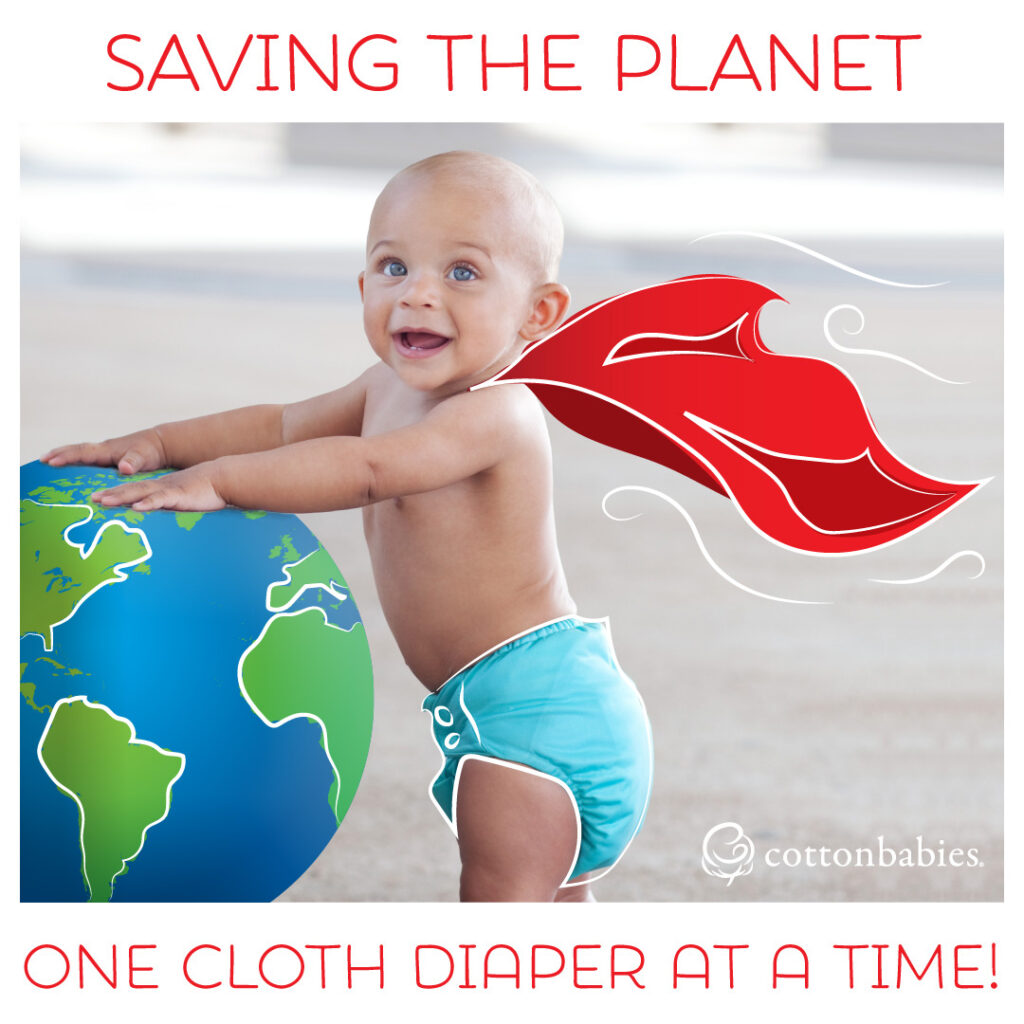
Help clean up plastic waste and plastic pollution
The first Saturday in May is Green-up Day in Vermont. We all go out to collect roadside trash and take it to collection sites in our towns. Besides beer bottles, much of the plastic litter is single-use drink bottles. And syringes. And tires.
You can help to clean up beaches and waterways. Take the discarded plastic debris of others home with you and discard it appropriately.
You can also support others who have taken on the task on a grander scale, like The Ocean Cleanup and 4Ocean, a relatively new company that claims to have already removed 28 million tons of plastic from oceans, rivers, and coastlines. I applaud their efforts and hope they ignore the naysayers who say it will never be enough.
What is the future of plastic?
We (all humans) seem to be really good at inventing things to make our lives easier…and thinking about or discovering the ugly consequences later (I give you nuclear power and artificial sweeteners).
I’m not sure when we’ll ever plan more carefully, but for now, we need to deal with the mess that the benefits of plastic in our lives have made.
I hope that all plastic is biodegradable and compostable one day—or that we replace plastic altogether with something that isn’t manufactured with fossil fuels. We need long term solutions to this global problem.
But, in the meantime, start with what you can do, however small that is, and never think that your efforts won’t make a difference. Think twice before buying a single-use plastic bottle.
Do you have a great idea for how we can cut plastic use and waste? Do you practice certain plastic-reducing efforts? Let us know what they are in the comments. and I’ll share them with everyone!


